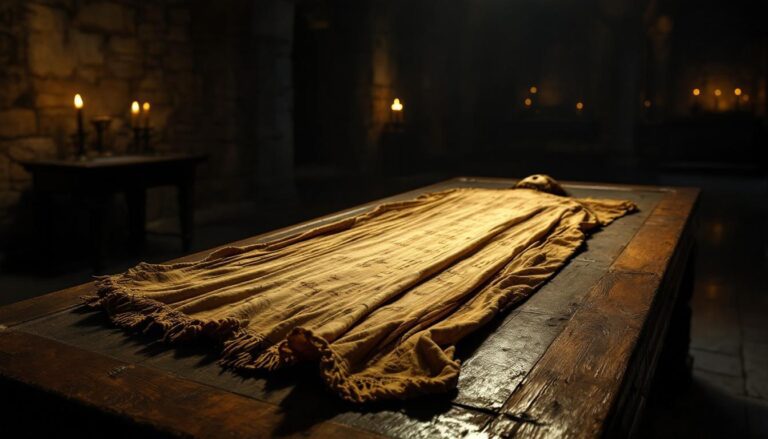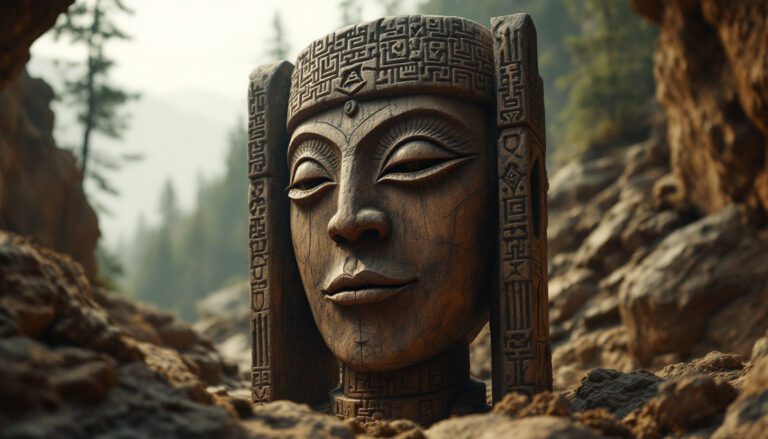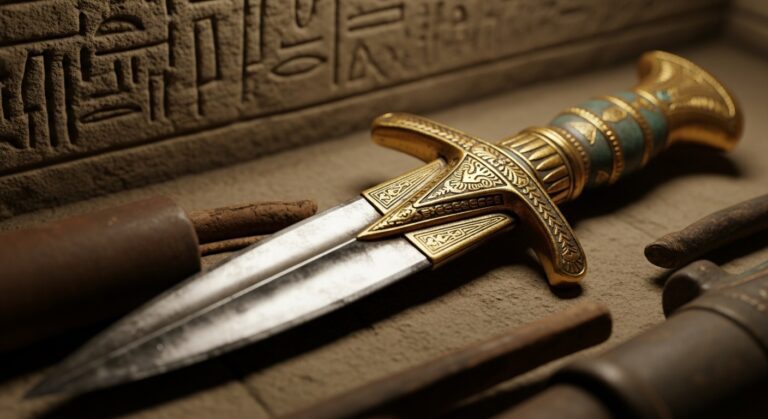Kensington Runestone: Hoax or History?
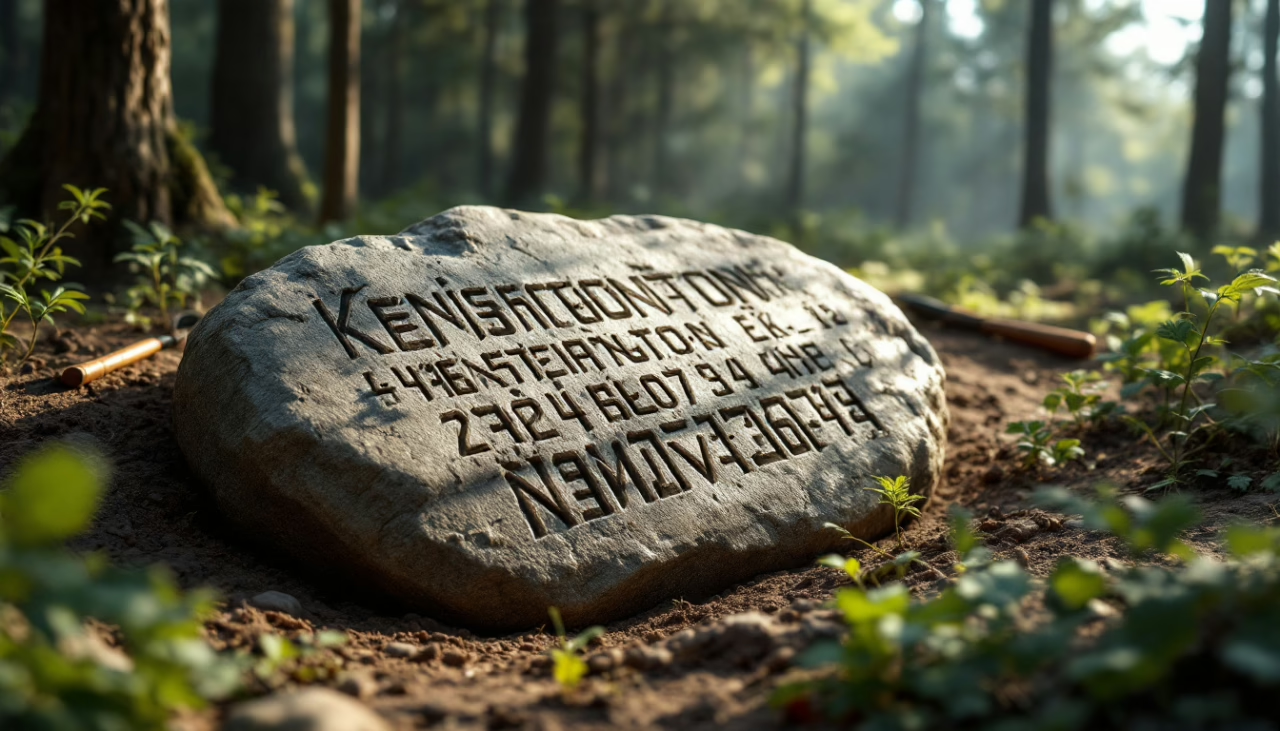
Did Vikings Carve the Kensington Runestone? – The Kensington Runestone stands at the crossroads of American history and folklore, its weathered inscriptions either evidence of bold Norse exploration or masterful deception.
Unearthed from Swedish immigrant soil in 1898, this enigmatic slab has divided scholars for generations.
Its runic characters tell of Nordic travelers reaching Minnesota in 1362—a full 130 years before Columbus—yet linguistic peculiarities cast long shadows across its claims. What truths lie buried beneath these controversial markings?
Summary of Key Points
Hide- Linguistic analysis reveals grammatical patterns aligned with 19th-century Swedish rather than authentic medieval Norse, suggesting potential forgery.
- Weathering patterns and geological evidence have been cited by some experts as supporting the stone's pre-modern authenticity.
- The stone's discovery location in Minnesota is geographically challenging, being 1,500+ miles from confirmed Norse settlements in Newfoundland.
- Academic opinion remains divided, with most linguists dismissing it as a hoax while some researchers argue linguistic anomalies represent medieval dialects.
- Cultural significance transcends authenticity debates, serving as an important identity marker for Scandinavian-American communities regardless of historical accuracy.
Discovery of Kensington Runestone and Initial Reactions
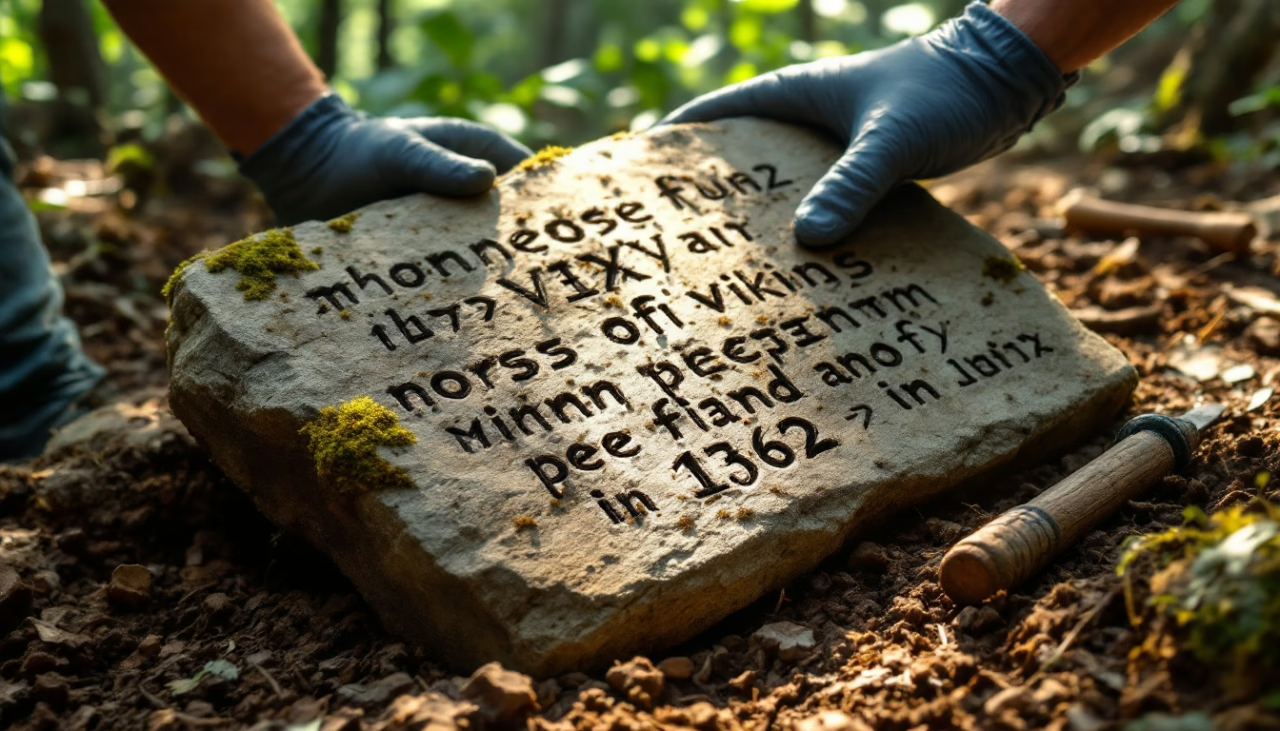
In the autumn of 1898, Swedish immigrant Olof Ohman reported an extraordinary discovery while clearing his farmland near Kensington, Minnesota: a stone slab covered with unfamiliar inscriptions, tangled in the roots of an aspen tree.
Local residents, initially puzzled by the strange markings that appeared to be ancient runes, soon contacted regional scholars who offered conflicting assessments, with some declaring it evidence of pre-Columbian Norse exploration while others dismissed it as an elaborate fabrication.
- 22 Famous Lost Cities Worldwide
- Rohonc Codex: An Untranslated Manuscript
- Piri Reis Map: Advanced Ancient Knowledge
- The Death of Edgar Allan Poe: Unanswered Riddle
- The Zodiac Killer: Decades of Terror Still Unsolved
- Princes in the Tower: Did Richard III Kill Them?
- Hinterkaifeck Murders: Unsolved 1922 Mystery
- Coral Castle: One Man’s Impossible Dream
The stark division between academic skepticism and local enthusiasm established a contentious pattern that would characterize the runestone’s reception for more than a century, transforming a farmer’s discovery into one of America’s most persistent archaeological controversies.
Unearthing the Stone in Minnesota, 1898
The Kensington Runestone‘s journey into historical controversy began on a November afternoon in 1898, when Swedish immigrant farmer Olof Ohman reported unearthing the peculiar stone while clearing trees from his property near Kensington, Minnesota.
Newspapers throughout the Midwest quickly seized upon the story, publishing translations of the runic inscriptions that supposedly chronicled a 14th-century Norse expedition into America’s heartland.
Public fascination with the artifact spread rapidly, capturing imaginations across America as citizens contemplated the possibility that Vikings, not Columbus, might deserve recognition as the first European visitors to the continent’s interior.
Olof Ohman’s account and the accidental find
Gripping his plow firmly on a late November afternoon in 1898, Swedish immigrant farmer Olof Ohman stumbled upon what would become one of America’s most enduring archaeological mysteries.
While clearing trees from his Kensington, Minnesota property, he unearthed a 202-pound stone tablet entangled in tree roots.
This accidental discovery sparked immediate debate over its origins and historical significance, catalyzing cultural impact that continues to resonate across academic circles today.
Early newspaper coverage and public fascination
News of Ohman’s mysterious stone discovery spread rapidly through Minnesota’s rural communities before enchanting the national press circuit, igniting public fascination that transcended typical archaeological finds.
The newspaper reactions oscillated between skepticism and wonder as media sensationalism transformed the artifact into a cultural touchstone.
Public intrigue deepened when competing historical narratives emerged, challenging conventional wisdom about pre-Columbian exploration and permanently altering local identity.
First Impressions from Scholars and Locals
When news of the Runestone’s discovery spread beyond Kensington, the divide between scholarly and local reactions emerged with stark clarity.
Academic linguists and historians from eastern universities quickly dismissed the artifact as a clumsy forgery, citing anachronistic runes and grammatical inconsistencies that seemed implausible for 14th-century Norse explorers.
Meanwhile, Swedish-American settlers throughout Minnesota embraced the stone with remarkable enthusiasm, viewing it not merely as an archaeological curiosity but as tangible validation of their cultural heritage in American soil—a powerful symbol that transformed them from immigrants into descendants of the continent’s early European explorers.
Immediate skepticism from academics
Despite the initial local excitement surrounding Olof Ohman’s discovery, academic scholars quickly cast a shadow of doubt over the Kensington Runestone’s authenticity.
The scholarly debate intensified when linguistic analysis revealed apparent anachronisms in the runic inscription, prompting historians to question its historical authenticity.
This academic skepticism, rooted in methodical examination rather than casual dismissal, highlighted the profound archaeological implications of either validating or discrediting this controversial artifact.
Local pride and the stone’s cultural symbolism
While academic circles dismissed the artifact as fraudulent, the citizens of Kensington and surrounding Minnesota communities embraced the runestone with fervent enthusiasm and unwavering commitment.
The stone quickly transformed into a powerful emblem of local heritage and community identity, weaving itself into the regional folklore.
For Scandinavian descendants especially, this contested artifact provided tangible historical symbolism that validated their cultural pride and pioneering contributions to America.
Decoding the Inscriptions
The weathered surface of the Kensington Runestone reveals a complex array of runic inscriptions that scholars have scrutinized for over a century, attempting to determine whether they represent authentic medieval Norse writing or a clever nineteenth-century fabrication.
Linguistic analysis has focused on both the content—which describes a Norse expedition to North America in 1362—and peculiarities in the runic alphabet used, including characters and linguistic constructions that some experts claim are anachronistic.
These distinctive features of script and syntax have become the central battleground in the authentication debate, with proponents arguing the text shows regional Norse dialect variations and opponents pointing to grammatical anomalies inconsistent with fourteenth-century Scandinavian language patterns.
Content and Translation of the Runes
The Kensington Runestone‘s inscriptions, when translated, describe a Norse expedition allegedly reaching Minnesota in 1362, claiming that “8 Goths and 22 Norwegians” were on an “exploration journey from Vinland westward.”
The specific date carved into the stone, “the year of our Lord 1362,” provides a precise temporal anchor that has become both the cornerstone of believers’ arguments and the focal point for skeptics’ scrutiny.
Weathered into the gray stone’s face, these runic characters tell either an extraordinary tale of pre-Columbian exploration into America’s heartland or represent one of archaeology’s most persistent and elaborately crafted hoaxes, depending on which scholarly interpretation one finds most compelling.
Description of the runic message and date inscribed
Carved into the weather-worn surface of the Kensington Runestone, a cryptic message in runic characters has puzzled scholars, linguists, and historians since its discovery in 1898.
The inscription, dated 1362, claims that eight Swedes and twenty-two Norwegians commenced an exploration westward from Vinland.
Within its weathered grooves, the runic significance transcends mere archaeological implications, challenging established timelines of European presence in North America.
Claims of a Norse expedition in 1362
What evidence emerges from the weathered runes that might substantiate the extraordinary claim of a Norse expedition reaching Minnesota in 1362?
The inscription’s details about an exploration party resonates with known Viking culture and Norse navigation techniques of the period.
Historical context suggests Norsemen possessed seafaring capabilities to reach North America, though Minnesota’s geography—far inland from coastal waterways—presents a significant challenge to expedition theories.
Linguistic Features and Script Analysis
Linguistic analysis of the Kensington Runestone reveals several anomalies in both its runic alphabet and grammatical structure when compared to authentic medieval Scandinavian texts.
The inscription contains unusual rune forms—including the peculiar hooked X symbol—that skeptics argue were unknown in 14th century Scandinavia but suspiciously match 19th century Swedish grammar school teachings.
Scholars have meticulously examined how certain words and phrases on the stone appear inconsistent with Old Norse conventions, exhibiting grammatical patterns more characteristic of modern Scandinavian languages, particularly the Swedish dialect prevalent in Minnesota during the late 1800s when the stone was purportedly discovered.
Runic alphabet variations and peculiar grammar
When scholars examine the Kensington Runestone’s inscriptions, they encounter a perplexing amalgamation of runic characters and grammatical peculiarities that continue to fuel academic debate nearly 125 years after its discovery.
The script exhibits unusual runic variations that some linguists claim represent natural script evolution, while others insist these anomalies, alongside questionable grammatical constructions, reveal a modern forgery disconnected from authentic historical context.
Comparison with medieval Scandinavian writing styles
The Runestone’s distinctive inscriptions, when placed alongside verified medieval Scandinavian writing specimens, reveal discrepancies that specialists find difficult to reconcile with authentic 14th-century Norse textual traditions.
Medieval runes employed in genuine Scandinavian scripts display consistent linguistic features and writing styles absent from the Kensington artifact.
The historical context of Nordic literacy, particularly in colonial expeditions, further undermines the stone’s claimed provenance.
The Norse Exploration Theory
The Norse exploration of North America, beginning with Leif Erikson’s settlement at L’Anse aux Meadows around 1000 CE, established a compelling historical foundation for potential further westward journeys.
Archaeological evidence confirms Viking presence in Newfoundland, but the question of whether these intrepid mariners ventured into the continental interior, perhaps traversing the Great Lakes and river systems to reach present-day Minnesota, remains one of history’s most tantalizing mysteries.
The vast distance—over 1,500 miles from confirmed Norse settlements—presents significant geographical challenges to the Kensington Runestone‘s authenticity, yet proponents argue that Norse expeditions, known for their remarkable navigational abilities and exploration ethos, could have theoretically undertaken such an ambitious inland journey.
Background on Viking Voyages to North America
Long before Columbus sailed the ocean blue, Norse explorers had established settlements in Greenland and ventured even farther westward, with archaeological evidence confirming their presence at L’Anse aux Meadows in Newfoundland around 1000 CE.
These northern voyagers, led by figures like Leif Erikson, created the first known European settlement in North America, a place they called Vinland, named for the wild grapes supposedly found growing there.
The extent of these Norse explorations beyond Newfoundland remains hotly debated among historians, creating a contextual backdrop against which claims like the Kensington Runestone must be evaluated.
Greenland settlements and journeys westward
While Erik the Red established the first Norse settlements in Greenland around 985 CE, his son Leif Erikson would venture even further westward, becoming the first European to set foot on North American soil nearly five hundred years before Columbus.
These Arctic expeditions expanded Viking trade routes considerably, as Scandinavian migrations pushed the boundaries of known territory through continuous Greenland exploration, establishing Norse settlements that would maintain tenuous connections with their homeland.
Connections to Vinland and Leif Erikson’s legacy
Leif Erikson’s voyages beyond Greenland led to his historic encounter with Vinland, a lush territory believed to be located somewhere along North America’s northeastern coast.
His explorations established Viking exploration routes that would later influence theories surrounding the Kensington Runestone.
Scholars debate the historical significance of these connections, particularly regarding potential cultural exchange theories and how Norse mythology connections might illuminate Leif Erikson’s impact on pre-Columbian North America.
Could Norse Explorers Have Reached Minnesota?
The journey from coastal settlements to Minnesota’s interior presents formidable geographic challenges, including intricate waterway navigation through the Great Lakes and numerous portages, which skeptics argue would have been nearly impossible for medieval Norse explorers.
Proponents counter by pointing to additional archaeological findings—including the Beardmore relics, Spirit Pond runestones, and several runic inscriptions discovered throughout the Midwest—which, if authenticated, would establish a pattern of Norse penetration deep into North America.
These contested artifacts, though individually dismissed by many scholars as coincidental or fraudulent, collectively raise the question of whether our understanding of pre-Columbian contact might be far more limited than previously acknowledged.
Geographic obstacles and logistical debates
Geographic barriers stand as formidable challengers to the Norse exploration hypothesis, raising profound questions about whether Viking adventurers could have realistically penetrated so deeply into North America’s interior.
Critics highlight the logistical challenges of traversing vast waterway systems, seasonal environmental factors, and substantial travel limitations imposed by the continent’s geography.
Any potential exploration routes would have required extraordinary navigation skills, portage capabilities, and sustained resource management across unfamiliar territories.
Other runestones and artifacts cited as supporting evidence
Several additional carved stones and intriguing artifacts have been cataloged by proponents of Norse presence in Minnesota, forming a constellation of potential evidence beyond the Kensington Runestone itself.
These include the Heavener Runestone of Oklahoma and the Spirit Pond stones of Maine, which, when placed in historical context, suggest a pattern of pre-Columbian Nordic exploration.
Archaeological findings of Norse-like artifacts, though controversial in their cultural significance, provide intriguing artifact comparisons for researchers seeking historical truth.
Controversy and Claims of Forgery
The Kensington Runestone has generated intense controversy since its discovery in 1898, with numerous scholars dismissing it as an elaborate hoax crafted by Olof Ohman, the Swedish immigrant farmer who allegedly found it entangled in tree roots on his Minnesota property.
Linguistic inconsistencies, anachronistic rune forms, and questionable grammatical constructions have fueled accusations of forgery, prompting critics to point to Ohman’s access to contemporary Scandinavian texts that might have provided templates for the inscription.
Nevertheless, a passionate contingent of supporters maintains the stone’s authenticity, citing geological evidence of weathering patterns consistent with the claimed 14th-century origin and arguing that certain linguistic features dismissed as errors actually represent regional Norse dialects that were poorly documented in the academic record.
Accusations Against the Stone’s Authenticity
Following the stone’s discovery, prominent historians of the early twentieth century launched swift and decisive attacks against its authenticity, claiming it exhibited linguistic features inconsistent with medieval Norse.
Their criticisms centered on alleged anachronisms in the runestone’s language and rune forms, which scholars like Erik Wahlgren argued reflected nineteenth-century Swedish rather than fourteenth-century Norse.
These testimonies from academic authorities established a foundation of skepticism that would shadow the Kensington Runestone for decades, though subsequent linguistic analyses would later challenge these initial dismissals with evidence of their own.
Arguments made by early 20th-century historians
Early twentieth-century historians launched withering critiques against the Kensington Runestone’s authenticity, establishing the foundation for decades of academic skepticism that continues to this day.
Scholars like Johan Holvik and Erik Wahlgren dissected the stone’s linguistic anomalies through rigorous analysis, arguing that its inscriptions reflected modern Swedish rather than medieval Norse—a devastating blow to regional pride and the historical context claimed by supporters.
Alleged anachronisms in language and style
Linguistic anachronisms pepper the Kensington Runestone’s text like telltale fingerprints of modernity, providing skeptics with their most compelling evidence against the artifact’s medieval origins.
Scholars highlight specific linguistic discrepancies—oddly modern syntax and rune usage inconsistent with 14th-century Scandinavian writing—that challenge the historical context of the artifact.
These interpretive challenges fuel scholarly debates with profound cultural implications for Nordic-American heritage narratives.
Supporters of the Artifact’s Authenticity
While the Kensington Runestone has faced significant skepticism, a cadre of respected linguists, historians, and archaeologists has emerged to champion its authenticity. They frequently point to linguistic features that would have been unknown to a 19th-century farmer.
Subsequent research by scholars like Richard Nielsen has identified runic characteristics consistent with 14th-century Scandinavian writing conventions, challenging earlier dismissals based on modern linguistic standards.
The geological examination of weathering patterns on the stone’s surface, conducted by geologist Scott Wolter, suggests a weathering timeline potentially predating Olof Ohman’s discovery. This adds a compelling physical dimension to arguments supporting the artifact’s medieval origins.
Experts defending the stone’s legitimacy
Despite widespread skepticism, several notable scholars have championed the Kensington Runestone’s authenticity, refusing to dismiss it as a mere hoax.
Linguist Robert Hall and geologist Newton Winchell provided expert analysis challenging forgery claims, while archeologist Richard Nielsen’s scholarly perspectives on medieval runes strengthened academic support.
Their collective work has transformed the legitimacy debate, suggesting the stone may indeed hold genuine historical significance worthy of continued investigation.
New interpretations from later researchers
Since the early 2000s, a new generation of researchers has emerged with fresh interpretations that challenge the long-held dismissal of the Kensington Runestone as a 19th-century forgery.
These scholars bring new perspectives to the academic debates, examining the artifact’s cultural significance within a broader historical context.
Modern interpretations now consider linguistic anomalies not as errors but as potential evidence of medieval Scandinavian dialects, offering compelling alternatives to the hoax narrative.
Cultural and Historical Legacy
The Kensington Runestone has transcended mere archaeological controversy to become a powerful cultural touchstone in American folklore, particularly among Scandinavian-American communities who have embraced it as potential evidence of their ancestors’ pre-Columbian presence on the continent.
Despite academic skepticism, public fascination with the artifact continues unabated, inspiring museums, local tourism, and periodic scholarly reexaminations that employ increasingly sophisticated analytical techniques.
These ongoing investigations reflect not only scientific curiosity but also deeper questions about American identity, historical narratives, and the compelling human desire to discover unexpected connections across time and cultural boundaries.
The Runestone’s Role in American Folklore
Whether genuine artifact or elaborate hoax, the Kensington Runestone has transcended its contested origins to become an enduring symbol of regional identity throughout Minnesota, drawing curious tourists and history enthusiasts to dedicated museums and monuments that commemorate its discovery.
The town of Alexandria proudly displays a 28-foot replica of the stone, while the Runestone Museum houses the original artifact in a display that transforms controversy into cultural heritage, effectively blending academic debate with local pride.
These physical manifestations of the runestone’s legacy reveal how deeply the artifact has been woven into the fabric of American folklore, creating an emotional connection to medieval Nordic exploration that persists regardless of scholarly consensus about its authenticity.
Its influence on local identity and tourism
Frequently overlooked in broader discussions of American folklore, the Kensington Runestone has nonetheless become an indelible cornerstone of identity for the residents of Alexandria, Minnesota, and surrounding communities.
The artifact catalyzes local heritage preservation efforts, generating substantial tourism impact while facilitating identity formation among residents who embrace it with cultural pride.
Community engagement manifests through museums, festivals, and educational programs celebrating this controversial piece of potential Nordic-American history.
Museums and monuments dedicated to the artifact
Museums dedicated to the enigmatic Kensington Runestone have transformed a controversial archaeological artifact into a tangible cultural monument, preserving not merely the physical stone but the complex narratives surrounding its contested origins.
- The Runestone Museum in Alexandria houses the original artifact in climate-controlled exhibits.
- Hjemkomst Center’s historical displays contextualize Nordic exploration claims.
- Public engagement programs invite visitors to examine runic inscriptions firsthand.
- Memorial Park’s monument celebrates the stone’s cultural significance regardless of authenticity.
Ongoing Interest and Reexaminations
The Kensington Runestone continues to fascinate researchers who employ advanced scientific methods, including X-ray fluorescence, 3D scanning, and weathering analysis, to extract new insights from its enigmatic surface.
Despite these technological advancements, the academic community remains sharply divided, with linguists, archaeologists, and historians frequently publishing contrasting interpretations that either reinforce or challenge the artifact’s authenticity.
This persistent scholarly attention illustrates how the Runestone transcends mere historical curiosity to become an intellectual touchstone, continually prompting researchers to reexamine not just the artifact itself, but also their methodological approaches and the very frameworks through which we evaluate historical evidence.
Modern scientific techniques applied to the stone
Over the decades, advances in scientific methodology have opened new avenues for examining the Kensington Runestone beyond traditional historical criticism.
Modern forensic examination employs:
- Digital imaging revealing previously undetected tool marks
- Material composition analysis determining weathering patterns
- Scientific dating techniques establishing potential timelines
- Microscopic examination of mineral crystallization and patina development
These approaches transcend subjective interpretation, offering tangible data in the quest for truth.
Continued debates in historical and archaeological circles
Despite decades of scientific scrutiny and historical analysis, scholars remain fundamentally divided on the Kensington Runestone’s authenticity, creating intellectual fault lines that have persisted well into the twenty-first century.
These academic controversies extend beyond scholarly circles, profoundly shaping public perception and challenging established historical narratives.
The stone’s contested archaeological significance continues to spark passionate discourse about American origin stories and their cultural implications.
Wrapping Up
The Kensington Runestone remains suspended in scholarly purgatory, neither fully embraced nor entirely dismissed.
This modest stone, with its contested markings, continues to challenge our understanding of American antiquity.
Whether an ingenious creative endeavor or genuine Norse testimony, its enduring significance transcends mere authenticity; it illuminates our perpetual quest to claim connection with the past and reminds us that history’s borderlands are rarely delineated in stone.
